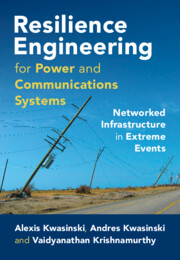For the purposes of research and/or evaluation, a community/society is organized into 13 Societal Systems under the umbrella of an overall Coordination and Control System. This organization facilitates descriptions of a community/society or a component of a community for assessment at any designated time across the Temporal Phases of a disaster. Such assessments provide a picture of the functional status of one or more Systems that comprise a community. Since no system operates in isolation from the other systems, information of the concomitant status of several Societal Systems is crucial to gaining a complete understanding of compromised functions, as well as the effects and side effects of any intervention directed at restoring the functional state of the affected community or risk-reduction interventions of a community-at-risk. The 13 Societal Systems include: (1) Public Health; (2) Medical Care; (3) Water and Sanitation; (4) Shelter and Clothing; (5) Food and Nutrition; (6) Energy Supply; (7) Public Works and Engineering; (8) Social Structures; (9) Logistics and Transportation; (10) Security; (11) Communications; (12) Economy; and (13) Education. Many functions and sub-functions of the Systems overlap, or share some common sub-functions with other systems. For the purposes of research/evaluation, it is necessary to assign functions and sub-functions to only one of the Societal Systems.
Birnbaum ML, Daily EK, O’Rourke AP. Research and Evaluations of the Health Aspects of Disasters, Part IV: Framework for Societal Structures: the Societal Systems. Prehosp Disaster Med. 2015;30(6):633–647.


